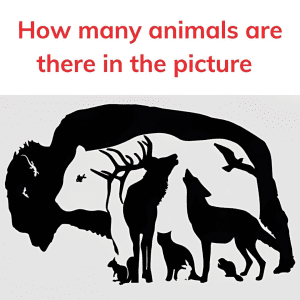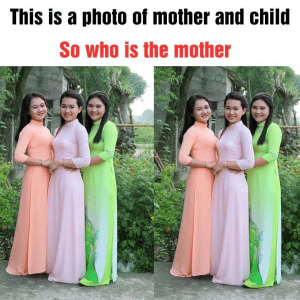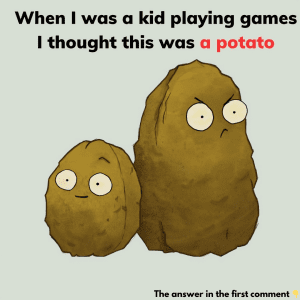The internet has managed to fuel curiosity like no other invention before it. From brain teasers to optical puzzles, you can find anything at your fingertips. But recently, a math question designed for children has stumped adults all around the world! Originally shared on social media, this brain teaser has sparked debates and left the internet scratching its head. Let’s dive into the puzzle that has everyone talking and see if you
The puzzle, posted on X (formerly known as Twitter) by a user from Jamaica, asks a straightforward question about time: What is the closest time to midnight? The question provides four answer choices:

It seems simple enough, right? Just pick the time that seems closest to midnight. But as people started to debate the options, things got a little more complicated.
Breaking Down the Options
At first glance, Option D, 12:03 a.m., appears to be the closest to midnight. Midnight is generally considered 12:00 a.m., so 12:03 a.m. would indeed be just three minutes after. For most users, that seemed like the obvious answer. But others began to question this logic. Here’s why this seemingly simple question has puzzled so many people.
The Role of Time’s Direction in the Puzzle
One of the biggest points of debate is whether time moves forward or backward when determining the “closest” time to midnight. Let’s break this down:
- If we assume that time moves forward from midnight, the next midnight will occur 24 hours later. So, when looking at 12:03 a.m., it technically has already “moved past” the first midnight. In that case, it could make sense to look for the closest time to the next midnight, which would bring Option A, 11:55 a.m., into consideration.
This assumption threw many people off. The confusion here centers around whether the question refers to the next midnight or the current midnight, and if you’re counting backwards or forwards in time.
A Trick of Wording?
Some people argued that the question was less about numbers and more about wording. Here’s why:
- The phrasing “closest time to midnight” could imply the nearest point in time relative to midnight, but the exact definition isn’t clear. The difference between “closest time to” and “closest time until” midnight led to varied interpretations.
For example, if you interpret the question as asking for the closest time until midnight, Option A, 11:55 a.m., makes sense. It’s just minutes away from the next midnight, 12:00 a.m. However, if we’re looking for the nearest time in relation to the most recent midnight, Option D, 12:03 a.m., would be the answer, since it’s only a few minutes past midnight.
By means of elimination the only answer is 'd' 12:03 am because 11:55 Am is 5 mins to midday, 11:50Am is 10 mins to midday and 12:06 Am is 6 mins past midnight which leave 12:03 am which is only 3 mins past midnight
— Natoya Colbourne (@ColbourneN58735) June 22, 2023
The Third Perspective: Word Placement
As the debate continued, some people brought up yet another interpretation. They argued that the “closest” time could actually mean the time that is physically closest to the word “midnight” in the question itself. This idea is purely symbolic but could add another layer of fun to the puzzle, implying that Option A, 11:55 a.m., could be the answer based on word association alone.
Other Factors to Consider
This puzzle highlights how a simple question can have multiple “correct” answers based on different viewpoints. Here are some other considerations people made:
- Midnight versus Noon: Since midnight is 12:00 a.m., some argue that anything close to 11:00 a.m. is actually closer to midday, not midnight. So in that sense, both Options A and C may not logically align with the idea of “midnight” at all.
- Reference Points: Others questioned whether more context should have been given. For example, are we looking at the most recent midnight or the upcoming midnight? Without these specifics, people were left to interpret the question in various ways, leading to many different conclusions.
Turning to Technology for Help
Without more information it’s hard to choose the answer. We say time in a clockwise manner which would make A the closest if we are talking about the next midnight. However, it did not state which midnight this D it closest.
— Jiren (@lammy_lams) June 23, 2023
Amid all the debate, some users turned to ChatGPT and other AI tools for help. ChatGPT quickly answered Option D, 12:03 a.m., as it followed a logical progression of minutes. However, since humans tend to look at problems from multiple perspectives, they came up with different answers, showcasing our ability to think creatively beyond what’s “logical” or “obvious.”
The Takeaway: A Puzzle That Celebrates Human Curiosity
Ultimately, this math question shows that sometimes, the simplest questions can spark the most thought-provoking discussions. It’s a reminder that perspective matters, and different interpretations can lead to equally valid answers. So, what’s the correct answer? It depends on how you look at the question! For some, Option D, 12:03 a.m., is the obvious choice. For others, Option A, 11:55 a.m., makes perfect sense.


